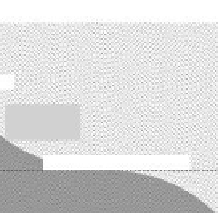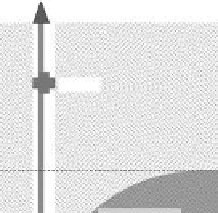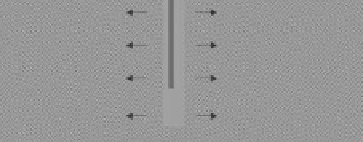Environmental Engineering Reference
In-Depth Information
of power generation. These parameters will be determined by both site char-
acteristics and the end use requirements.
Performance Modeling
The most important parameters for optimization in the design of this system
are the well hydraulic head, flow capacity, and electrical system efficiency.
Contrary to common well flow yield measurements, the parameter of inter-
est here is the measured flow that can be re-injected into the aquifer, not
the flow that can be pumped out or “yielded.” While aquifer re-injection is
accomplished at various projects across the country, methods to accurately
determine re-injection flow capacity are more complicated than the common
pumping calculations. This section will provide simplified models to predict
the re-injection flow of a well with a given hydraulic head. It will also analyze
the allocation of hydraulic head between the head that powers the turbine
and the head that re-injects water into the aquifer. Also addressed are the
electrical system performance and efficiency during electricity generation.
The initial thought of a designer of this type of system is to approximate
the re-injection flow capacity as roughly the same as the yield capacity of
a well. Let us test this assumption for steady state flow conditions. When
drawing water from a well, a cone of depression is created around the well
because of the finite transmissivity of the aquifer material. This cone can
depress down to the point at which the pump is located and no further.
Thus, the well yield is limited by the hydraulic conductivity of the material
and the location of the pump in the well. The right half of Figure 4.4 depicts
two-dimensional effect of the cone of depression that occurs when water is
drawn from a well.
HEAD
Turbine
Turbine
Pump
Mound of
Injection
HEAD
Injection
Static Water Level (datum)
Cone of
Depression
FIGURE 4.4
Mound of injection and cone of depression.






